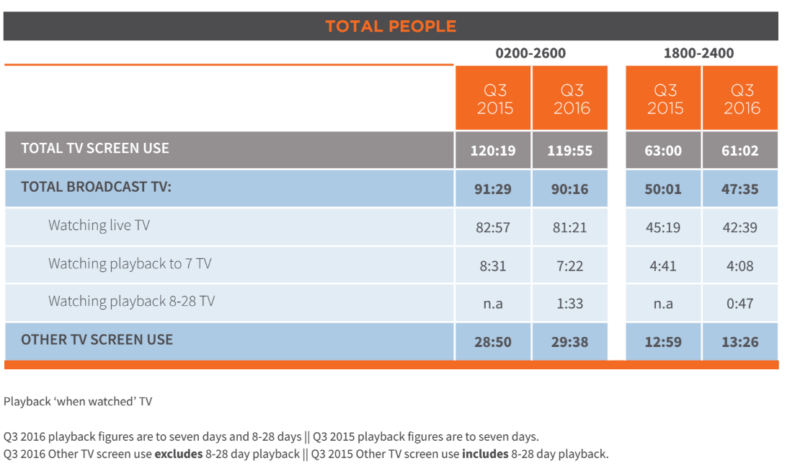Prime time TV viewing habits are changing, audiences fragmenting
With more screens, platforms and channel choices than ever before, the way in which Australians engage with broadcast television is continuing to evolve – but it’s during the peak viewing hours that the trends away from live TV are most prominent.

The time Australian TV viewing audiences are spending watching broadcast television in Q3 2016 compared with the same time last year.
The latest edition of Australia’s multi-screen report for July to September shows ‘traditional’ television viewing habits remain dominant, but the “seemingly infinite” number of devices and program options is fragmenting audiences.
“The gradual decline in time spent viewing live and playback TV over the past five years follows the spreading behaviour that screen, content and platform choice enable. Even so, all age groups spend more of their video viewing time watching broadcast TV on television sets than they do on any other single device,” the report said.


more screens but does anyone know who’s watching what?
Been doing playback during prime and other time for many years, thanks Foxtel. There’s nothing like being able to run commercials through at 30 x speed. Even playback top rating shows on the night they are screened, just have to start watching a little later.
60x (on Foxtel IQ3) is even better. Count to six (= 360 seconds), hit play again and you’re almost exactly at the first scene after the ad break. And yes, wait 15 minutes and you can do the same with all shows. If the advertisers insist on insulting us (as more and more of them do), we no longer have to suffer them.